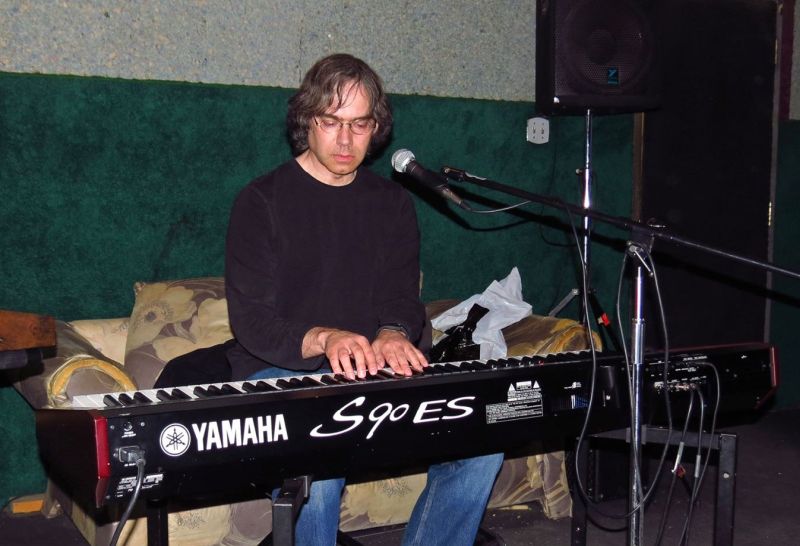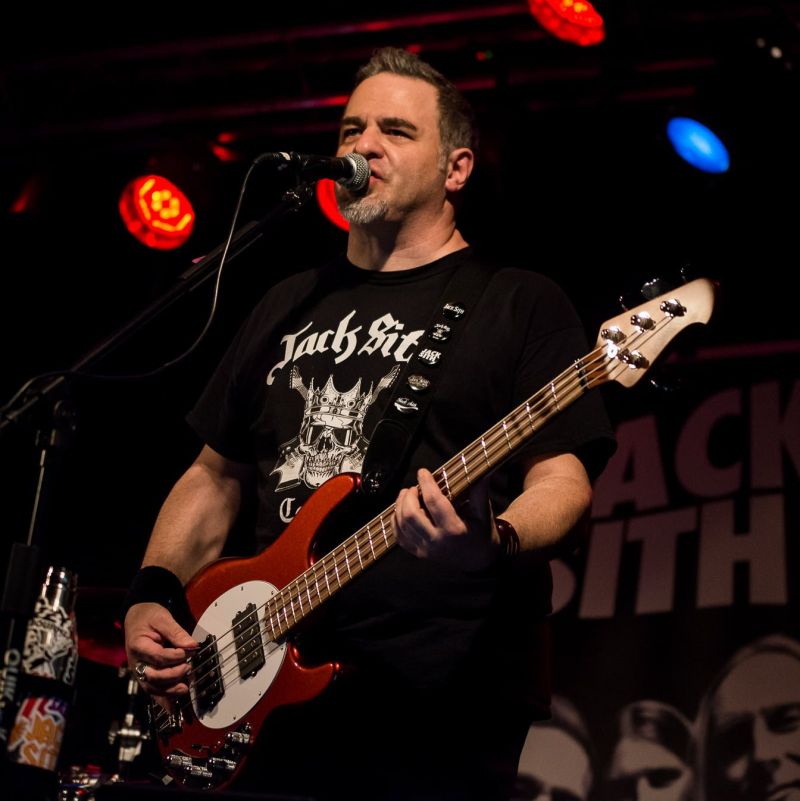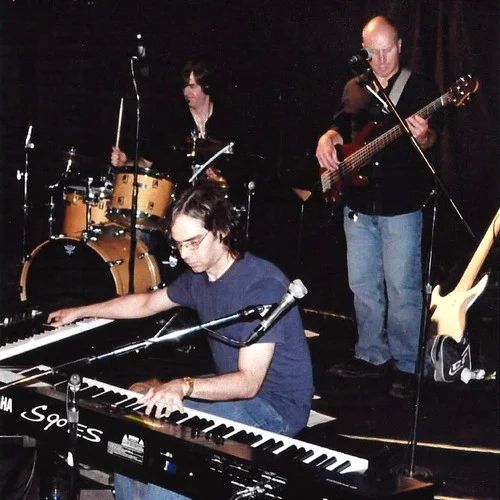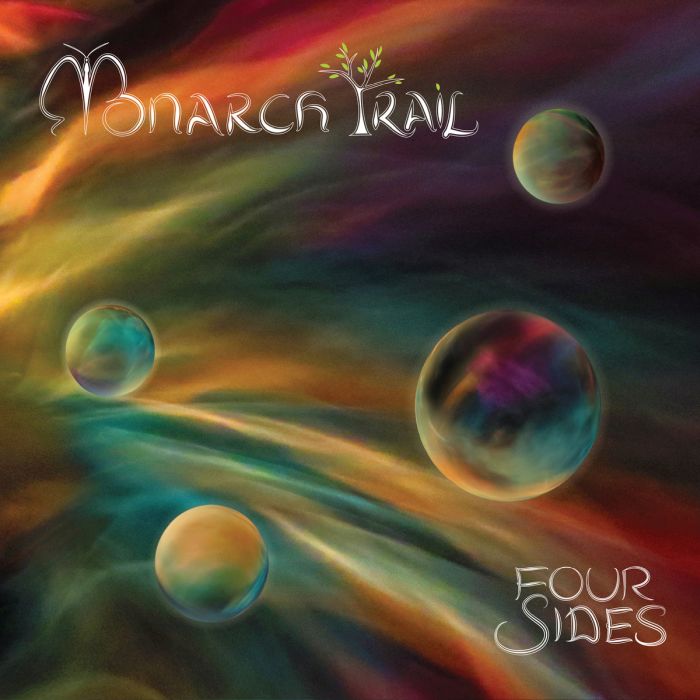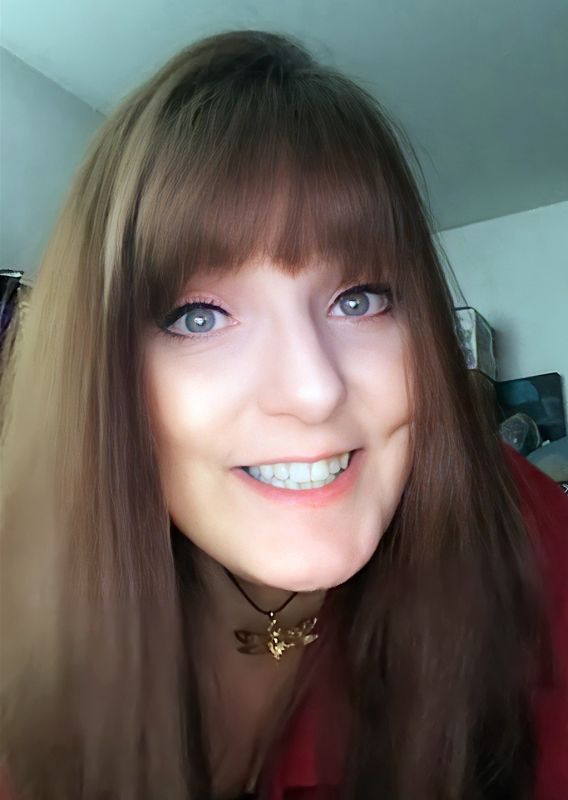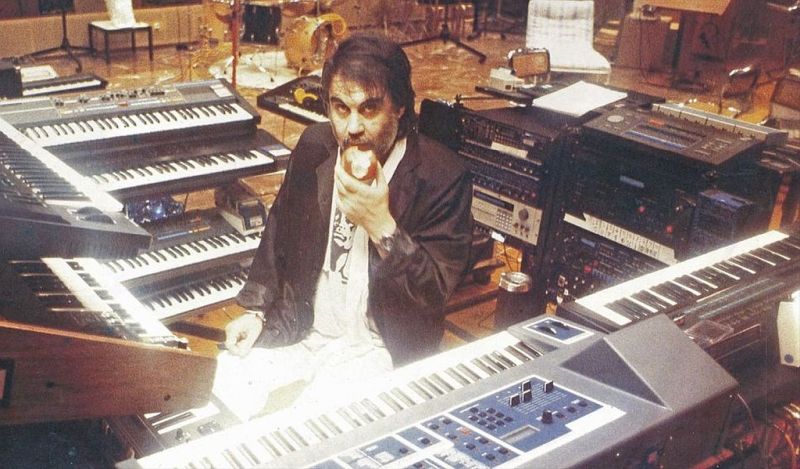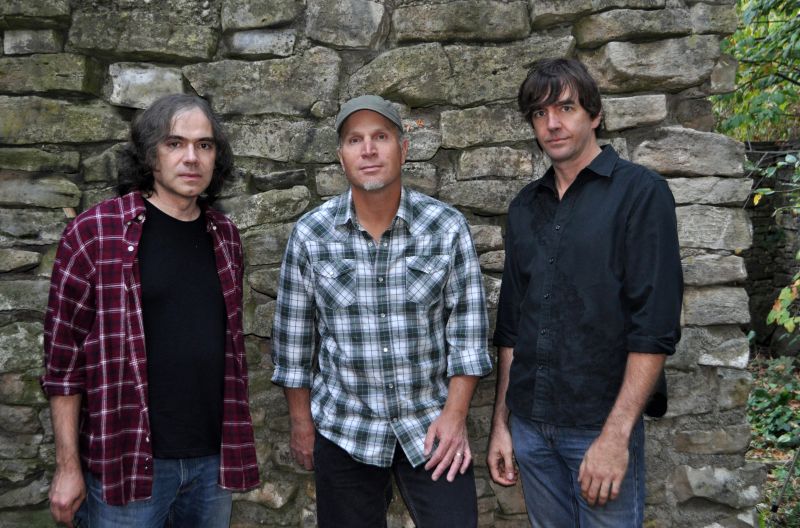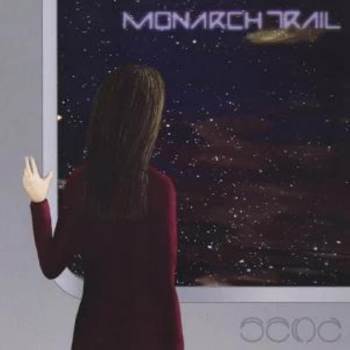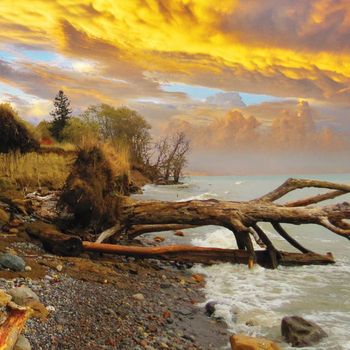|
Interview Ken Baird (Monarch Trail) "It's really hard to judge yourself, but we should always do the best we can" (February 2024, text by Henri Strik, edited by Peter Willemsen) For me personally Four Sides was the best album of 2023 (see review). It was recorded by the Canadian band Monarch Trail led by keyboard player and lead singer Ken Baird. He founded the band in 2014 in Dundas, Ontario. Baird recorded five albums as a solo artist, but he wanted to expand his activities in a band. After recording four albums, Monarch Trail is still rather unknown in the progressive rock scene and therefore Background wanted to put the band into the spotlight to give them the success and attention they deserve. So, I asked Ken everything about their latest masterpiece and everything else I always wanted to ask. After recording five solo albums you started to release albums with Monarch Trail. What was the main reason for this change? “Yes, indeed, I did five solo albums from 1996 till 2009. The first three were made at a time when my life was a bit simpler workwise, and I was able to get an album out every two years. The last two albums were much harder
So I think I was looking for a big change for the next project and decided I'd stop the solo albums for a while and do a band project instead. In particular, I wanted it to be a progressive rock band. Sometime after a final gig of the Ken Baird Band in July 3rd 2009 at The Cameron House in Toronto, I asked Chris and Dino if they'd like to be in a band with me to do play progressive music whatever that meant to them and whatever that meant to me.” Where does the band name come from? “The name comes from a nature trail which is very local to where I live in, Dundas, Ontario, and not far from Chris either. Dino lives about forty minutes away by car. When we were trying to come up with names, I had a sort of shortlist and Chris really liked Monarch Trail out of the names on the list, so I jumped at it right away! It's so hard to find a name someone likes! Fortunately, Dino also agreed and we went on with it!” How did you get in touch with your musical companions Chris Lamont and Dino Verginella? “I met Chris in high school in music class grade 9 or 10 and we used to jam sometimes at the end of the lessons. We later lost touch for quite a few years but I met him again playing for Jacob Moon's band in 1997 or 1998 and I think we both played on his second album Among The Thieves. I think Dino is on that album too! If he's not on that one, he certainly is on the next one, but I think I stopped playing for Jacob around the time of that third album. I first met Dino at Ron and Linda's Monday Night Acoustic Jam some time in 1995 at the La Luna restaurant in Hamilton, Ontario where he used to play what I can only try to describe as 'comedy sidekick sax'! I had no idea he was a bass player till later on! It's always great working with both of them and they work together very well! Chris played drums on my solo albums from the third one onwards and obviously he played on all of the Monarch Trail albums too. Dino played a few tracks on my fourth solo album called Martin Road, all of the tracks on Further Out and again he's on all of the Monarch Trail albums.” | ||||||||||||
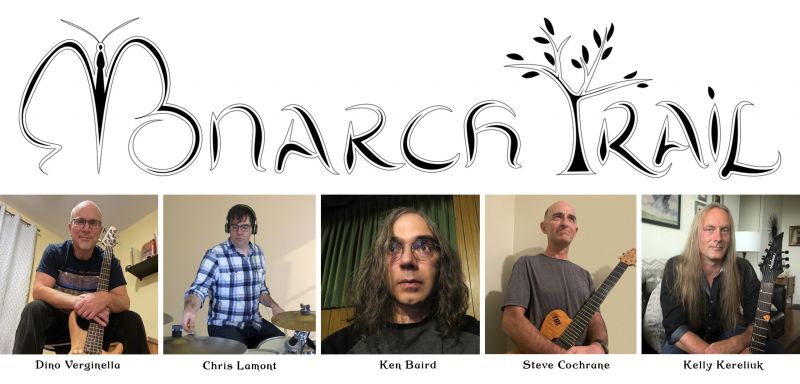
| ||||||||||||
|
How big is their input in playing and writing and do you have to tell them how to play certain parts? “I think with Four Sides, I'd say that ninety to ninety-five percent of what Dino plays are entirely his bass lines. Occasionally I only asked him for this or that. With Chris it's now heading in the same direction, although he doesn't mind sometimes playing to a drum pattern that may have been on the initial demo too. In fact, sometimes it is Dino's drum creation and not mine. Moon To Follow was from Dino's demo and Chris copied his drum pattern while I copied his harp and piano contrapuntal lines exactly. Then I added similar stuff to the chorus, and even built upon his melodies for many of the vocal melodies, even into the middle sections of the song. For the earlier albums, especially the first two, there were a few more lines where I came up with I wanted Dino to play, but I'm glad we're now even more band-like as the albums progress and most of the lines are all his now.” I think that also goes for the guitar players Kelly Kereliuk and Steve Cochrane. How big is their input in playing the parts you composed? “With Kelly and Steve, all the leads are their own creation, but some of the rhythm parts are sometimes mine, or if it's a much simpler lead, it's often a melody I gave them to play. So you can probably assume: the more complex or faster the lead, the more likely it's from Kelly or Steve.” On the first two albums John Mamone played some guitar parts. Why is he no longer a guest player on Wither Down and Four Sides?
The lines John played were about eighty percent mine. I tended to give him the parts that I might have played on guitar, but he's a much, much stronger guitar player than I am, even though he considers himself to be a bass player and vocalist first and he probably doesn't think of himself as a guitarist. Moreover, he's a pretty good keyboard player and drummer as well! He's got an incredible talent for rock music in general and I always thought he would become a great guitar player. He came up with some of his own leads for example, the first one on Luminescence comes to mind and also the wonderful Alex Lifeson-like fast strumming about a minute into the start of the same song was his idea for sure.” Did Four Sides became the album you wanted it to be and how long did it take to finish the recordings? “Four Sides happened very quickly and was released just over two years after Wither Down. I'm happy to say I'm finally back to one album every two years, although I haven't started the next one yet, so I better get my skates on! But yes, I'm happy that Four Sides did what I hoped it would do. It's more or less a double album, that indeed would fit nicely on an LP if I can afford to do so. It's very costly to print any vinyl, and the smaller the run is, the more expensive it is per unit. Anyway, that's another story, hopefully we'll get that done! Musically, I'm very happy with it. I think we all are.” For those people who don't know the story about the album title Four Sides, would you please tell them why you chose that title? “I'm afraid it was just because I wanted to do a double album like Tales From Topographic Oceans by Yes. I even wanted to make it four long songs, but in the end I couldn't quite do it after the first three side-long songs, and so side four contains two shorter songs. For money reasons, I was advised to do a single CD instead of a double one. I'm glad, I made that decision since we're not at a high sales level like IQ or Marillion. We can't afford a double CD with the extra manufacturing and postal costs etcetera. But just under 74 minutes is an ideal length for a CD, so I made sure side three and four were a bit shorter, but sides one and two have the exact LP length. A second LP would be a bit on the short side of seventeen and fourteen minutes per side, which is not too bad. Again though, I hope we will be able to do a double LP! Right now, I can't see it happening any time soon, but if sales continue to be good, which they have been so far, then we may be able to print two hundred pieces or something like that.” Is Four Sides a concept album or you could look at it as four different aspects of the band? Would you please explain what the individual songs are about? “I don't think Four Sides is a concept album beyond the four sides idea of four separate stories that hopefully work together, or in this case, five separate stories, but on four sides of vinyl, imaginary for now! The CD of course is only one side really! Well, side one is an epic track like we did on the first two albums with Sky Above The Sun and Sand. Side two is more experimental, side three features more piano than the other sides - Kelly is in the band here - and side four contains Dino's writing on Moon To Follow and Steve is here! Then back to the trio for the final tune.” Would you please explain what the individual songs are about? “The lyrics of The Oldest Of Trees is partly looking back to early grade 7-8 into high school days, and yes, this is very personal. Thinking of a friend from back then who has now sadly passed away far too early. It
Eris is an instrumental song, but it tells a sort of story that can mean different things to different people. I like all songs to do so as I think a lot of people do. So I won't say too much what I think it should be here, but basically there's a storm that gradually forms in the first three minutes, then some experimental or technical sounds, then a big dawning which leads to an individual musical improvisation from me that leads to a full three-piece section of the track. Both sides one and two are the trio version of Monarch Trail, so it's all Chris, Dino and Ken on the first half of the album. I thought of the dwarf planet Eris in our solar system for the story and it might sort of make sense as even though I've read it's very cold most of the time, a sort of atmosphere can apparently form when it's a bit closer to the sun, and I had an idea that maybe sounds could possibly occur during this period. This may or may not be possible! Twenty K contains very simple lyrics that I took from a run of twenty kilometres I manage to do a few times a year, if I'm lucky! But again, the lyrics can be interpreted as different things to different people. There's a bench on this run halfway through with a quote by Carl Sagan, the famous American astronomer: 'Life is but a brief glimpse into an astounding universe'. It was put there by a guy called Steven Revell, or by his family once he had passed. Anyway, I thought the quote is a really good one, but also at this bench in springtime, I saw the huge field of trilliums under a forest canopy which were more than I'd ever seen. I also imagined the view above at night would have a fantastic star scape as it's not near any city in particular, so not too many lights to interfere. Just all seemed to fit in with from that quote. The lyric sort of wrote itself, and for whatever reason some relationship-type lyrics found their way in there, something I haven't done much of since some of the solo albums. Moon To Follow contains the weirdest lyric of the album where I probably put way too many ideas into it. It somewhat tells a story in the verses of the Brennan sisters (Moya and Enya Brennan from Clannad, HS) or what I imagined their childhood might be like. Their parents ran a pub in Ireland and I thought of one or both of them sneaking into the music area of the pub in daylight hours, and wondering what stories the walls could tell about the musicians' songs at night. A lot of sort of pagan references came in with rituals of the moon and stuff like that, plus just the 'ritual of a night at the pub' and then even Herne The Hunter came into it a bit from the Robin of Sherwood-series that Clannad did the music for. I said it was a bonkers lyric! And in the middle of the song for no reason whatsoever, I made it go into a Keith Emerson kind of area with the jazzy bit referencing Hang Onto A Dream by The Nice. I asked Chris to play some tambourine here to help to make it like that, but then I finally found a spot to put a sort of Emerson, Lake & Powell section that I had around for some years looking for a home. It seemed to fit here although it's a stretch! Funny thing though, I read a book about The Nice recently and they did actually play in Dublin, not all that far away from Gweedore back in the sixties! So Moya and Enya would have been alive at any rate, but I'm sure we were near that gig! The end of the song seemed to refer to Firefly, a song from my second solo album Fields, that worked with the whole 'under the moon' idea of the song, and in the end I have us like fireflies, a light all of our own which might also refer to Luminescence by Monarch Trail. The final song is instrumental and is called Afterthought that has a slight musical reference to The Oldest Of Trees I put in at the last minute. So there might be a running theme of remembrance throughout the album linking the four sides together, so maybe there is a bit of a concept there..?”
Who created the incredible looking logo of the band? “Again, that was Annette's idea with the M looking like a monarch butterfly outline and the T looking like a tree. I didn't ask for anything specific, I just asked if we could have a logo this time around. Annette did an amazing job, we're super happy with it! It was likely my mistake on Wither Down where I left the album cover blank. I was going for a Big Big Train kind of approach there. They got away with it, but we're not so well-known, so I think it was a mistake to do so. I still like the cover of that album, but we probably should have had writing on it too. There is a version from Annette that does have writing on it, so if we ever re-release Wither Down, we'll put the band name and album title on the cover.” How important was it for you that Four Sides shared the same release date with Wind And Wuthering by Genesis? That album was released on December 17th, 1976, 47 years earlier... “It was not important to me, but the timing was such that we were very late in the year getting the CDs here. I picked them up December 15th, but I was aware that the release of that Genesis album was only a couple of days later. I still had a lot of preparation to do for the release anyway, so I delayed it till the 17th. I really did it just for fun because the timing more or less matched. By the way, I really love Wind And Wuthering! It's easily one of my favourite albums of all time. Tony Banks was my first influence to play keyboards and especially for writing, so I have no problem with doing a kind of tribute there. The first Genesis album I ever heard was actually the eponymous album of 1983. I was eleven or twelve years old at the time, but from there I went on and bought all albums in the back catalogue and I was blown away! And yes, that's when I started playing keyboards and writing chord patterns at the same time. My hands were finally big enough to play chords and octaves, I think that helped. It all happened very quickly and it became the thing I was most interested in.” As far as I'm concerned, Eris is probably the weirdest track on the album containing the ice cold Nordic winds. Do you agree? “I agree, Eris is a weird one as if I want to extend the Tales From Topographic Oceans idea. It's side three where they did The Ancient and those first eight minutes are possibly a bit strange. For us, it ended up being side two and I thought: here's a place where we can try a riskier track. You're also right about the ice cold winds, although I guess I was thinking of Eris rather than winds in Nordic countries, but they are more realistic I'm sure! I don't really know if Eris would truly have winds of any kind with such a brief and weak atmosphere that only appears sometimes. That's just a fantasy idea that there could be an actual windstorm, most likely. But who knows? I did the whole piece during the middle of winter and there was a snowstorm outside the window, so it all came together quite naturally and very quickly. Even the ending section with Chris and Dino and most of the lead keyboards are from my winter demo and I didn't re-record them later, but I did quite a few edits in the last eight minutes though! I left some of the rough edges since some of the lines were too rough. I also added acoustic piano much later in the summer and the Mellotron parts.” To what extend were you inspired by ambient and new age music for Eris? “Well, let me say that I like ambient and new age music and although I have some early Tangerine Dream albums such as Zeit, I was influenced more in the noise sections by the sixties and seventies soundtracks from people like Tristram Cary who did some of the backing music for the TV-series Doctor Who. He also did the soundtrack of The Daleks (1963) among other series. It's often more impressive than any sound I could come up with! I'm not sure how he created some of those sounds, especially back then. Dick Mills was also present, he did a lot of sound effects for Doctor Who in the sixties and the seventies. There's a kind of sound from City Of The Exxilons (1974) that pipes up every minute or so during the storm section for example and I should really credit Dick Mills for that as I basically tried to recreate that kind of sound. There's also a backwards piano that reminded me of The House That Jack Built from the TV-series The Avengers. It was a lot of fun to do for me, but I have to apologize for people who may not enjoy that section too much! Hopefully over time they might get to like it in a weird way. I was lucky enough to be at music school at McMaster University from 1990 to 1994 and during the lessons of the history of 20th century music we listened to all kinds of weird sounds! We did atonal music along with experimental and electronic music and although it was pretty weird at the time, I soon realized it did mentally opened things up a lot for me. It was a very positive experience.” In my opinion the music tends also in the direction of the great Greek musical maestro Vangelis. Have you been influenced by him? “Thanks very much, Henri! Yes, Chariots Of Fire came out when I was nine or ten years old and I bought the single, or in fact I asked my parents to buy it for me. I played it endlessly, and maybe it partly influenced
Moon To Follow has a more free jazz style of playing on the piano. How much are you into this kind of music and did it influence your musical style? “I know Chris and Dino are both from a jazz, rock and even a funk background, but mine is more classical and rock. So, I always feel like I really like jazz, but I am not truly knowledgeable in that area. I have played at least some pieces by Oscar Peterson from a book he transcribed himself. I play Rhapsody In Blue, by George Gershwin, but not very well I think, but sometimes it works and a fair bit of Scott Joplin rags as well. I need to break these out again! Whenever Keith Emerson plays jazzy bits, I often try and give them a go by ear. So I guess that I love jazzy sounds, but I'm not sure how qualified I am to try and write it or play it properly. I don't always know what to do with it. However, Chris and Dino didn't complain about the music I came up with, so I think it works well and is a nice switch for us. Many of my favourite bits of Monarch Trail music are the bass, drum and piano sections where things kind of pare down to a trio. It's a minimum of tracks, just the three of us playing live if you like. I love that jazzy section in Moon To Follow, thanks for noticing it and also I have to credit Dino's bass lines there, so cool! I love Chris' playing during this section too and indeed the whole song, he played the heck out of those drums!” How do you deal with negative reviews? For example, if somebody writes that your vocal parts are the weakest on the album, does that motivate you to sing stronger like you do on Four Sides? “I remember for Skye were some very negative reviews about the vocals, and I agreed with some of it. The verses of Luminescence, for instance, I sang in a sort of 'matter of fact' way with little emotion and it's not very well recorded either. I did not use a breath-guard on that album for whatever reason. Instead I sang away from the microphone a bit to avoid 'p-pops' but that negatively affected the tone, so that is not something I would do again. I also think I sounded unpractised on it, which was the truth as I hadn't sung for a while since
But getting back to Monarch Trail, I made sure to improve the vocals on Sand. I think they are much better. I warmed up a lot more and got some nice breathy tones on it. I think those vocals work really well although my pronunciation of some words on Missing isn't very good. I think I was so obsessed with the tone, that I forgot I had to sing words there too! But yes, in general I really like the vocals on Sand, Wither Down and Four Sides. And like I said, Skye is probably the best seller so far, so maybe the vocals are okay, but with a few tomatoes thrown at them in spots. It's really hard to judge yourself, but we should always do the best we can. For Wither Down I probably pitched some of the songs too high for my range, although some of it works well and I warmed up a lot before those sessions. I remember Chris told me he really loved the vocals on the Wither Down album, so that means a lot to me! I did the same preparation for Four Sides, I made sure to warm up a lot. So yes, I'd say that some of the negativity regarding my vocals does make me practice more, but I think that I would practice even more if I get any praise for them! Obviously, I'm happier when people like it and it's hard for me to read negative reviews. Anyway, some people will never like my voice and that is okay by me too.” I recognize musical influences from bands such as Genesis, Yes and Emerson, Lake & Palmer as well. But it made me also think of Barclay James Harvest and Glass Hammer. Do you agree and did you listen to those bands when you were younger? “Thanks very much, Henri! You are correct about Genesis, Yes and Emerson, Lake & Palmer. I'm a massive fan of all three bands and I think I've been heavily influenced by all of them! I'm less familiar with Barclay James Harvest but I have been compared to them many times, especially vocally. I like the songs that I've heard from BJH a lot! Oddly with Glass Hammer, although they're maybe a few years older than me and their first CD came out in 1993 and mine was 1996. I feel I'm pretty much contemporary with their career. I had another band Perpetual Angelus and we did our cassette in 1994, so it only differs a year and I remember their ads and promos in Progression Magazine (USA) at the same time I was starting to put ads in there and have reviews. They went a lot further than I ever did, but yes, I think we're contemporaries and I like them a lot. I have Perelandra, their second CD which I bought many years ago, and more recently I got Cor Cordium. Glass Hammer is a very good band! I haven't heard their latest work that much, but yet I will check it out.” |
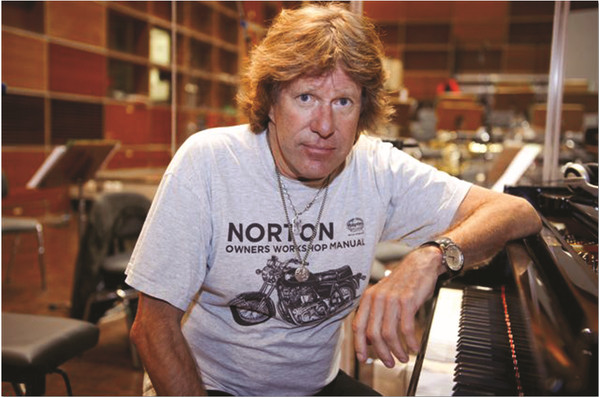
|
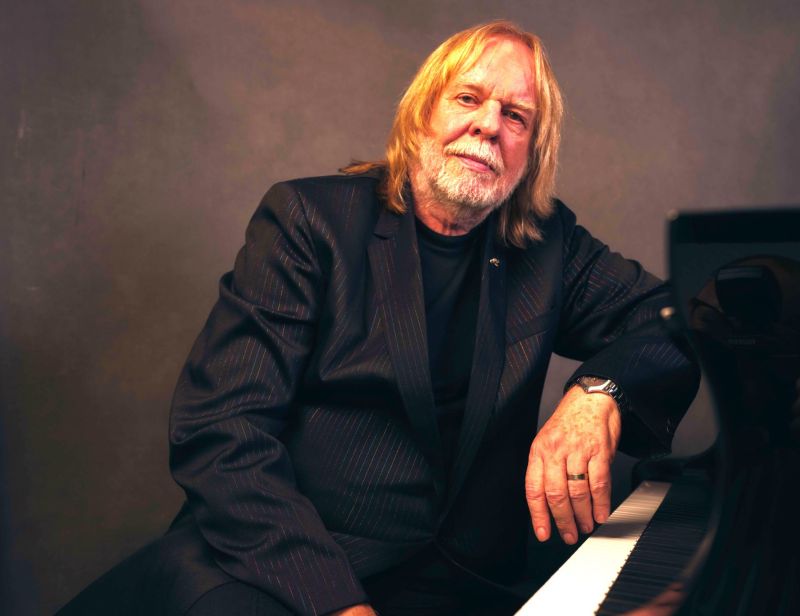
|
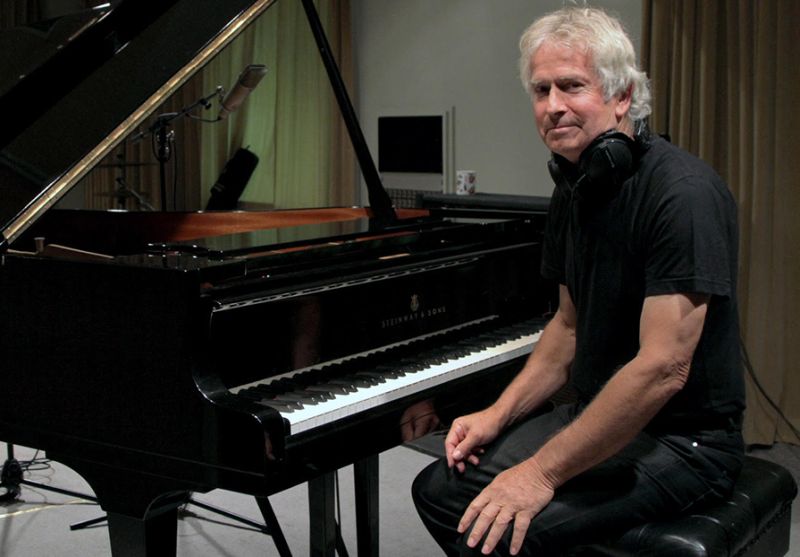
|
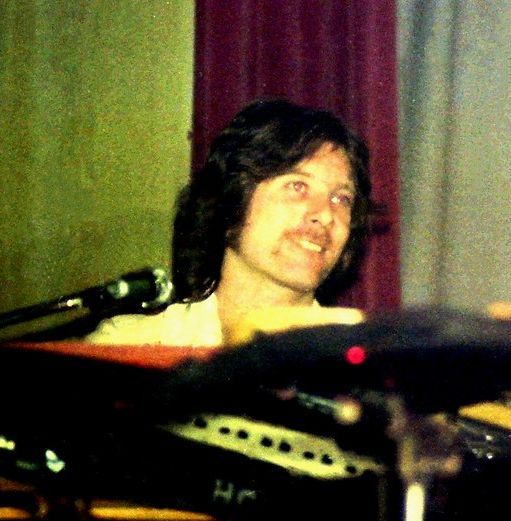
|
| Keith Emerson | Rick Wakeman | Tony Banks | John Tout |
|
The keyboard sounds of Keith Emerson, Rick Wakeman and Tony Banks are never far away! How much did you learn from them? “A lot! As I said earlier, Tony Banks was my first and most important influence by far, but Keith Emerson and Rick Wakeman were huge for me as well. I'm still learning from them! Lots of classical composers come into it as well for sure, with Bach, Prokofiev, Debussy being some of them.” I also heard the piano sound of John Tout, the keyboardist of Renaissance. Was he an inspiration too? “I agree and thank you very much for noticing this, Henri! Around the time of my earlier band Perpetual Angelus and before I recorded my solo albums, I was listening a lot to Renaissance and when I listen to those albums, I can really hear how much John Tout influenced me. In the last four years or so, I suddenly realized again how big an influence John Tout's playing and writing was to me and that I love the music of Renaissance very much. I now would put them in my top bands of all time, maybe even at number one!“ Do you have any idea why other reviewers hardly mention him? “I think music historians and reviewers probably don't acknowledge him as much because he wasn't that flamboyant of a performer. He remained quite behind the scenes and he was not too flashy. I think that might be the reason why he gets passed-by a fair bit.” Do you have any plans of doing live concerts with Monarch Trail? “When we started this project, I focused in on recording what we thought were good progressive songs, but I didn't worry too much about live stuff in order to focus solely on the writing and recording. But we've done almost ten years of that now. Skye came out in 2014 and maybe it's time to do something live again, finally! How this can actually happen is still up in the air, and all I can say is we'll maybe start with the three of us jamming some songs, then add people. Most likely most of the songs would be pretty hard to perform, but there are those simpler or sparser moments too, so it will be an interesting experiment to see what can happen and what cannot. I feel like we're going to give this a try if possible!” What do you think has the future in store for Monarch Trail? “I like to think we have many more albums ahead of us even though we're all over fifty now. I'm rarely short of material, and songs come up pretty quick most of the time. And hopefully Dino will again send me some material, maybe Chris too! And if the sessions for testing out live material produce new songs as well, that might prove a solution to both situations. The next album might be more of a live-focused kind of approach.” Well Ken, thanks for answering my questions and lots of success in the near future! “Thank you, Henri, you're very welcome! As you can likely tell, I enjoyed answering your questions as fully as I could! It makes me think about where we are, what we are doing, and where we are going. Also a big'thank you' to all your readers of Background Magazine!”
bandcamp review album 'Skye' review album 'Sand' review album 'Wither Down' review album 'Four Sides' |
